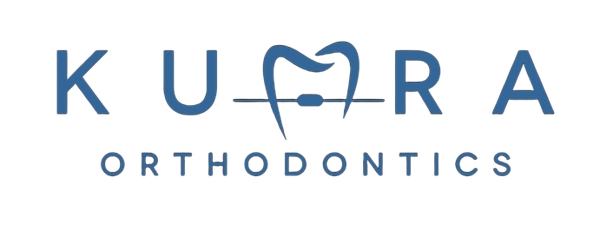FAQs
The best time to get an orthodontic evaluation is at 7 years old. As the teeth start to form and erupt, we want to make sure they are growing in the right direction for their adult teeth. A complimentary consultation at age 7 is a chance for us to evaluate your child’s jaw and check the progress of their adult teeth.
It’s important to get a proper orthodontic evaluation at an early age. At the age of 7, the individual is in a position to receive a complimentary consultation that will help establish whether or not orthodontics are necessary. In some cases, these movements may not come about until 12 or 11 1/2.
Orthodontic treatment usually starts when the second molar teeth are beginning to grow in.
The best age to start orthodontic treatment for most people is probably going to be in general somewhere between 11 and a half and 12 1/2 or 13.
If you’re looking to recover from jaw surgery, make sure you know what orthognathic surgery is. During this procedure, surgeons will reposition your lower or upper jawbone, using orthognathic surgery techniques. These techniques can help prevent some of the adverse effects of jaw surgery, like swelling or discomfort.
The best way to recover from jaw surgery is to take it easy and follow your doctor’s orders, which usually includes rest, relaxation, TLC and appropriately following up with the doctor. You’re looking at about 7-8 weeks of recovery time.
It will take some time for you to regain feeling in your mouth after surgery, so you might need to drink with a straw and eat softer foods.
Every case is different. This can range from 6 months to as long as 2.5 years.
There is no charge for the consultation.
A series of photos and x-rays will be taken, and treatment options will be presented, including what appliances can be used and length of treatment time. An estimated cost breakdown will also be provided.
We can start treatment the same day as your consultation if you are indeed ready to move forward after reviewing all treatment options with the doctor.
Give our office a call so that we can get you in as soon as possible to repair it.
Either move up to the next aligner or if it is too uncomfortable, move back to the previous aligner. Give our office a call to see if we need to re-order the lost aligner.
You should be able to continue wearing the cracked aligner as long as it is not causing any discomfort. If it is uncomfortable, go back to the previous aligner or try to move up to the next aligner.
Give our office a call so that we can get you in and have you examined by a doctor right away.
Orthodontic insurance differs from dental insurance. Within dental coverage, there are two different components of orthodontic coverage: lifetime maximum amount and annual or maximum out. In theory, you can get braces once and have a plan that may cover up to 50, 60, or 70% of the cost.
Another thing to remember about orthodontic insurance is that they don’t offer a lump sum of the benefit. They will bleed it out over the course of your treatment.
They typically do, but there is usually an age limit. Typically, the age limit is 18, 19, or up to 23. As long as the child is under this age and still needs braces, they will be covered by insurance plans.
One thing to note is if the age cutoff for coverage is 18 years old: if a child starts treatment at 17, coverage will be in effect until they turn 18. After that, the insurance company will stop covering the treatment.
AmeriHealth will cover dental for you. You need to submit a pre-authorization packet, which includes photos and X-rays, to them. Their on staff orthodontist will make a decision based off of a standardized point scoring system to see if the braces or the treatment is going to be covered. There is also a point system, where the more crowded or flared teeth are, the more points are assigned. If it’s north of a certain number of points, the treatment is covered by the state.
Short answer is yes. Kumra Orthodontics has a pre-authorization requirement, but the process is quick and easy. We will talk to you and your child about what treatment is needed, get an overview of your insurance plan, and then submit the pre-authorization packet to the insurance company’s on-house orthodontist who will make the final determination. When a patient is in need of orthodontic treatment, an insurance company will usually have a standardized scoring sheet to determine the medical necessity of the treatment. The more crowded a tooth is, the more flared a tooth is, and the more severe a discrepancy in alignment is, the higher the points allocated to that patient.
Each insurance company has different regulations, pre-authorizations, age cut offs, and waiting periods. A waiting period is something that many insurance companies use. So when it comes to insurance, they’re the ones who make the rules. For example, we’ve had patients come in and say that they started treatment with me earlier than the date on their insurance card. Unfortunately, none of that would be covered because what they do is audit your charts and the X-rays to see if you met their criteria for coverage.
The price for braces varies depending on your exact treatment needs. The standard fee for our office is $6,500.00, but it also depends on your insurance if applicable. What we do during your initial and complimentary consultation is we take X-rays and 3D scans so that we can fully assess your treatment needs and provide you with an accurate quote during that same consultation.
Braces are generally between $4,500 and $5,500. Here at Kumra Orthodontics, we always try to give my patients the best option. That is why we offer a no interest payment plan over the course of treatment to make it as affordable as possible.
So, if we give the range of $4500 to $5500, then the insurance company will have their benefit. They’ll have 1500 or 2500 deducted off of the amount that we charge so that your insurance company pays for up to half of it.
A tooth can move about a millimeter per month. So if you have a 5 millimeter gap, it will take about five months for your teeth to begin to close that space. If we want to just say very cookie cutter things to see a noticeable change in orthodontic treatment with braces, you will probably start seeing drastic movement in teeth and a drastic difference in about four to six months.
While an atypical orthodontic plan for treatment may be 18-24 months, many patients come back only 4-6 months after starting their treatment with a noticeably big smile. This could be because of the confidence they’ve achieved from their treatment.
Typically, a full set of braces takes 18-24 months to complete.
The fibers that cover the teeth have a permanent memory and will always want to revert back to their original position.
With that, retainers can help you keep your teeth aligned and prevent them from shifting, but they only work if you wear them the necessary amount of time each day. What we like to do is give the patient the example of somebody who recently lost weight: you know your body will have a rebound and gain some weight back. Another example is when someone with curly hair straightens their hair, it would always want to revert back.
A more common case of braces will usually take anywhere from 6 to 9 months. For a more accurate estimate, we might need to take a closer look at your teeth.
Braces take awhile because we want to make sure that we don’t do anything detrimental to the tooth or the blood supply of the tooth. We sometimes joke with patients and tell them we can probably finish your orthodontic treatment in three months but they aren’t going to like us very much because the teeth will end up falling shortly thereafter.
We take our dental care very seriously. That’s why we provide the patients with thorough demonstrations on how to properly brush and floss their teeth. We use a device called a floss threader which will really look like a sewing needle, but it’s just a plastic needle that’s not going to pierce the tongue or anything like that. And what happens is underneath the wire, you’ll pass the floss and the floss threader, and then both ends of the floss will be through the wire.
You may also visit Kumra Orthodontics’ Youtube channel for actual demonstrations to be able to understand how you can properly take care of your teeth while you have braces on.
No crunchy, sticky, or hard foods should be eaten while in braces.
The retention phase of orthodontic treatment is the most important one. Patients need to wear their retainer day and night for about 90 days or three months. If everyone follows this, we can prevent all kinds of dental problems.
There are several different types of retainers. You have an Essix retainer which will cover the top and bottom teeth, and it can be removed for eating or drinking.
A Hawley retainer is an orthodontic retainer that offers superior comfort. They are made of a hard plastic or acrylic plate with a thin metal wire that connects to the roof of your mouth. The wire sits against the front of your teeth for superior comfort.
There also are permanent retainers which are glued to the back of the teeth on the top and bottom.
Your orthodontist is going to diagnose the best type of retainer for your particular needs. This may seem like an easy decision, but there are pros and cons to each. For example, the permanent retainer is set it and forget it, but they do have limitations on diet and the ability to floss. So in most cases, we avoid permanent retainers so we decide to go with the removable retainers. But again, these will all depend on the diagnosis of your orthodontist.
In general, a retainer will cost you roughly $250.
If you’re only wearing it at night, you are likely to have the retainer for a much longer period of time. Usually, we say that you should replace your retainer every couple of years. However, I’ve seen some of my patients have their retainer for 20 years. So, how often is up to you, but it’s usually anywhere from 2-5 years.
We normally charge $250 per retainer (or $500/set). If you already have your 3D printed models in your possession and need a replacement retainer, bring the model to our office, and the new retainer cost will be discounted to $150 per retainer. We also offer a bulk package of 4 sets of upper and lower retainers (vivera through invisalign) for $880.
If we do not have a digital scan on file, we need to see you in the office to scan your teeth and design the retainer. If we have the scan, simply call our office to have the retainer made. If you already have the model of your teeth, drop it off at our office to have a new retainer made.
We can start treatment the same day as your consultation if you are indeed ready to move forward after reviewing all treatment options with the doctor.
As long as the structure of the tooth isn’t compromised, it’s not a big deal if it’s discolored. You can get new retainers for your teeth as often as you change your shoes. If you wear your wing tips sporadically, that means that they won’t wear out as fast. But if you’re wearing them every day like we are supposed to, then you’ll need to change your retainers every two to five years.
Either move up to the next aligner or if it is too uncomfortable, move back to the previous aligner. Give our office a call to see if we need to re-order the lost aligner.
You need to understand that Invisalign is not an invisible process. There are attachments that must be adhered to your teeth, which are tooth colored and will need to be worn about 22 hours a day. If you’re looking for an alternative to braces that is both subtle and discreet, then Invisalign is the answer. Invisalign offers a more hygienic option for tooth movement. Invisalign’s popularity has grown with its availability in society, and it now attracts a new older patient base who weren’t expecting to need orthodontic care.
The pros for older adults are that it is a more subtle, more hygienic, and a removable way to move teeth without the need for wiring or metal objects. It also offers a more socially accepted way to make teeth look better. For adults, the main downside to wearing braces is that it can be difficult to maintain the same level of commitment as a child. If you don’t wear them consistently, your teeth won’t move. If your teeth don’t move, you’re just wasting your time.
So the con for Invisalign is that it’s removable whereas the pro for Invisalign is that it’s removable. So if you have accountability and you really commit to doing it, Invisalign is a very amazing way to move teeth around.
Invisalign is a brand name of clear aligners. Our in-house aligners are designed and made in our office. Both are custom-made for the patient and one may be recommended over the other to better suit the patients’ needs.
So not all cases are Invisalign friendly, some cases you cannot treat with Invisalign because the movement needed is just far too complex. Also we know when we treat some of our younger patients that we just won’t be compliant enough to use the Invisalign, so as a doctor, we make a determination about which treatment is going to allow everyone to be successful, patient, parent, and orthodontist.
So should I get Invisalign or braces really depends on the case. It really depends on comfort level with having accountability. I will say Invisalign appointment frequency is less than it is with braces. Standard interval for appointments for braces is probably going to be every six to 10 weeks. For Invisalign, it is probably going to be every 9 to 14 weeks.
Invisalign is a clear, removable, and comfortable way to straighten your teeth. It offers a faster solution than metal braces because it allows us to finish a case with higher compliance in 18 months instead of 24 months. With traditional braces, we have to spend time gradually adjusting the wires to make sure that each tooth is at the right position before we can move on to the next one.
Because Invisalign is digital and we’re able to digitally create the treatment plan, we’re able to start moving all of the teeth immediately, which probably shaves off about five or six months of treatment. We tell our patients it’s 24 months of braces but 18 months of Invisalign with accountability. As long as you’re compliant, we can get it done quicker.
You sure can, but we really want to make sure we stress that the bite stays in coincidence. Orthodontic treatment usually works better when you have both arches, top and bottom, being treated so that we maintain the integrity of the bite. While jaws are independent, when you bite down, they need to be in harmony.
The cost of any orthodontic treatment is based on the complexity of the case and the length of treatment time. This cost is determined after a doctor carefully examines records taken during the complimentary consultation.
Only the cost difference for treating one arch really is nominal. There’s still a significant lab fee, a significant fee of treatment plan, the case and everything, so you may be looking at just a few $100 difference for treating one jaw, top or bottom only, and that price point is probably better to do both so that we can take advantage of being able to make sure we do the best possible work for our patients.
At Kumra Orthodontics, we do one fee for any treatment that you want. We do not like when patients come in only being able to afford treatment type of metal braces, but really wanting Invisalign we want this to be as enjoyable of a process for you. We do the same price for treatment for braces and Invisalign. In general, braces, as a national average, are going to be less than Invisalign.
Absolutely. Invisalign needs to be worn 22 hours a day to be successful with treatment. In order to safely move a tooth, there needs to be a constant pressure on that tooth, otherwise it will rebound. So what we do is 22 hours a day, if you’re a numbers person. In concept, we take it out to eat or drink anything besides water.
Water is OK. Seltzer water is not OK. Crystal Light Lemon, Pepsi, a glass of wine, Gatorade – none of that stuff can be in there because the sugar in the liquid is going to get in between the tray and the teeth and it is going to sit there and you will have discoloration and cavities, which we don’t want to happen.
Because aligners are removed while eating, there is no dietary restriction during Invisalign treatment. Sometimes the attachments glued to the teeth can catch staining, so it is recommended to brush or rinse after eating/drinking anything that might discolor the attachments. Examples include tea, coffee, red wine, foods/drinks with turmeric.






